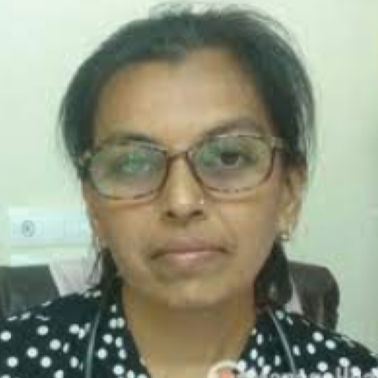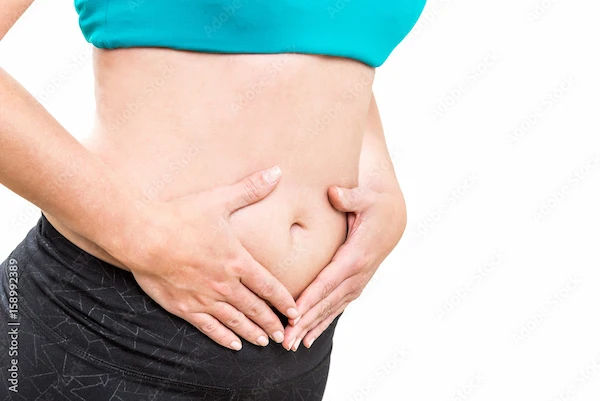Breast Pain: Causes, Diagnosis, and Treatment
Breast pain is one of the most common concerns among women worldwide. Learn all about breast pain for better management. From causes and symptoms to diagnosis and treatment options.

Written by
Last updated on 3rd Jul, 2025
Breast pain, also called mastalgia, affects many women during the different phases of their lifetime. This pain can range from mild to severe discomfort. Medical professionals classify breast pain into two main categories: cyclical and non-cyclical.
Cyclical breast pain relates to hormonal changes during menstruation. This type occurs regularly with monthly cycles. The pain typically affects both breasts.
On the other hand, Non-cyclical breast pain has no connection to menstrual cycles. This type may occur in one specific area of the breast. The pain often feels more constant and burning.
Let’s dive deeper to explore detailed insight into the discomforts women face with breast pain and how to overcome them
Causes of Breast Pain
Hormonal fluctuations cause most cases of breast pain. Changes in estrogen and progesterone levels affect breast tissue. Common hormonal causes include:
Menstruation
Pregnancy
Menopause
Birth control pills
Hormone replacement therapy
In addition to this, physical impact or injury can also lead to breast pain. Sports activities sometimes cause breast trauma, whereas wearing ill-fitting bras during exercise increases injury risk as well.
Besides the impact of physical activities on breast pain, breast infections also put women at risk of significant pain and discomfort. One such infection is mastitis, common in breastfeeding women and creates inflammation.
Symptoms Associated with Breast Pain
Several symptoms often accompany breast pain. Recognising these helps in understanding the underlying cause and seeking timely treatment.
1. Physical Changes:
Swelling of breast tissue
Tenderness to touch
Changes in breast size
Lumps or thickening
Skin changes
2. General Symptoms:
Burning sensation
Sharp, shooting pains
Heaviness in breasts
Discomfort during movement
Pain extending to armpit
Location patterns can offer valuable insights into the underlying causes of breast pain. When pain is diffuse and affects both breasts, it often points to hormonal factors. In contrast, localised pain confined to a specific area may signal an injury or infection. Understanding these patterns can aid in determining the most likely cause.
Risk Factors for Breast Pain
Certain factors increase the likelihood of experiencing breast pain. Understanding these can help in managing or preventing the condition.
Women in their reproductive years are more likely to experience cyclic breast pain. This is directly tied to hormonal changes during the menstrual cycle, pregnancy, or menopause.
Younger women often notice tenderness or heaviness before their periods.
A family history of breast pain or related issues can increase susceptibility. This connection may result from inherited hormonal responses or shared genetic patterns.
Women with close relatives who experience breast discomfort should be mindful of this risk.
Diagnosis of Breast Pain
Proper diagnosis is essential for identifying the cause of breast pain. Doctors use several methods to ensure an accurate evaluation.
A doctor starts by checking the breasts for signs of swelling, lumps, or tenderness. They may also examine the chest and armpits for any abnormalities.
A complete medical history is often discussed to understand patterns of pain and associated symptoms.
Imaging tests like mammograms or ultrasounds are commonly used to evaluate breast tissue. These tests provide detailed images to detect changes or abnormalities.
In some cases, a biopsy may be performed. This involves collecting a small sample of breast tissue to rule out serious conditions such as cancer.
Treatment Options
Treatment for breast pain depends on its cause. It often involves a combination of medications, lifestyle changes, and, in rare cases, surgical intervention.
Over-the-counter pain relievers, such as ibuprofen or acetaminophen, are commonly used to manage breast pain.
Hormonal therapies, such as oral contraceptives, may also help regulate the hormonal fluctuations that cause cyclic pain.
For severe cases, doctors may prescribe medications to reduce inflammation or pain.
Simple lifestyle changes can significantly alleviate breast pain as well:
Wearing a properly fitting and supportive bra reduces strain on breast tissue.
Limiting caffeine intake and maintaining a balanced diet can also minimise discomfort.
Regular exercise and stress management, such as yoga or meditation, are additional strategies that promote overall health and well-being.
Surgery is not a typical treatment for breast pain but may be required in rare circumstances. For example, if an abscess or cyst is causing severe pain, surgical drainage might be necessary. Other conditions, such as the removal of benign lumps, may also require minor surgical procedures.
When to Seek Medical Attention
Breast pain is usually harmless and temporary. However, in some cases, it may indicate a serious issue that requires medical attention. Recognising these warning signs ensures timely diagnosis and treatment:
Pain that does not improve with time or worsens may need evaluation. Persistent discomfort over weeks could suggest underlying issues.
A lump, thickening, or unusual change in breast texture should not be ignored. These changes require a professional assessment to rule out conditions like cysts or tumours.
Nipple discharge, especially if it is bloody or occurs without squeezing, may indicate a problem. Consulting a doctor in such cases is essential.
Signs of infection, such as swelling, redness, or fever, are red flags. Conditions like mastitis need immediate treatment to prevent complications.
Early evaluation helps identify serious conditions. Most breast pain cases resolve with simple treatments. Therefore, understanding breast pain patterns helps women recognise normal changes versus concerning symptoms.
Preventive Measures
While not all cases of breast pain can be prevented, certain habits can reduce the likelihood of its occurrence. Prevention focuses on maintaining overall breast health. Here are some of the preventive measures:
Maintain a healthy diet rich in fruits and vegetables.
A supportive bra that fits well can reduce strain on breast tissue.
Avoid excessive caffeine and alcohol consumption.
Practice regular self-breast examinations to detect changes early.
Managing weight and staying active can help in reducing breast-related discomfort.
Conclusion
Breast pain is a common condition influenced by hormonal changes, injuries, or infections. By understanding its causes, symptoms, and treatment options, women can better lead towards its better management and may even resolve it completely.
Preventive measures and awareness of risk factors can significantly help tackle it. However, the best results come from ample care. With proper care and timely medical attention, most cases of breast pain can be resolved effectively.
Consult Top Obstetrics and Gynaecologist
Consult Top Obstetrics and Gynaecologist

Dr Swatika Kumari
Obstetrician and Gynaecologist
19 Years • MBBS, DGO, DNB Obstetrics & Gynaecology
Nashik
Apollo 24|7 Clinic - Maharashtra, Nashik

Dr. Priyanka Surisetty
Obstetrician and Gynaecologist
8 Years • MBBS, DGO
Visakhapatnam
Apollo 24|7 Clinic - Andhra Pradesh, Visakhapatnam

Dr. Shailaja L
Obstetrician and Gynaecologist
16 Years • MBBS, MS
Bangalore
Apollo 24|7 Clinic - Karnataka, Bangalore

Dr. Mona Yadav
Obstetrician and Gynaecologist
19 Years • MBBS, MD (Obstetrics & Gynaecology)
Dombivli
Nulife multispeciality, Dombivli

Dr. Parul Sharma
Obstetrician and Gynaecologist
8 Years • MBBS, MS (Obstetrics & Gynaecology)
New Delhi
THE DOCTORS NESST, New Delhi

